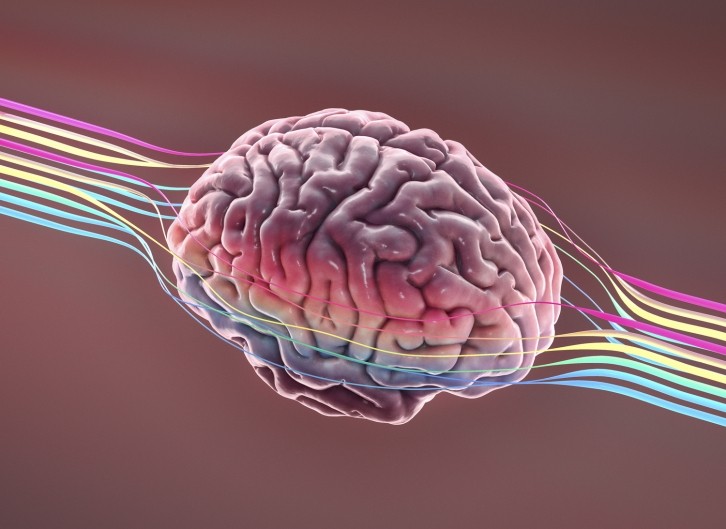Terran Biosciences - the difficulties of getting new schizophrenia treatments to market

Clark has a background in neuroscience research and medicine and he and the team at Terran are targeting several conditions with their therapies including schizophrenia and Alzheimer’s disease.
While treatments for schizophrenia such as antipsychotic drugs were groundbreaking when they were introduced in the 1950s, they only treat some of the symptoms of the condition and are associated with potentially debilitating side effects. Despite this, no new treatment mechanisms to target schizophrenia have been introduced to the market for over 40 years.
In September this is likely to change, as KarXT, a muscarinic receptor agonist combining xanomeline and trospium will be evaluated for approval by the US FDA following success at phase 3. KarXT was originally developed by Karuna Therapeutics, which is now a subsidiary of Bristol Myers Squibb after a $12.5B acquisition.
Clark spoke to BioPharma Reporter about his motivations, about what he hopes to achieve at Terran and about why new therapies for schizophrenia are desperately needed.
Why did you decide to start Terran Biosciences?
I got into neurology because when I was growing up, a number of my friends and family members had severe mental disorders, specifically bipolar disorder, and also dementia and Alzheimer's disease. I wanted to make a difference and develop new drugs.
Once I was studying medicine at Columbia, I realized the drugs we're using to treat people with aren't that great and there aren't that many new ones. So, I founded Terran to fix that and to develop new treatments for patients with neuropsychiatric conditions.
What would the approval of KarXT mean for the treatment of schizophrenia?
It's the first new anti-psychotic mechanism in 50 years. It is really exciting to see new mechanisms enter the space.
Anti-psychotics have been around for a long time. The first-generation drugs block the dopamine type two receptor, and the second generation do the same thing plus inducing some additional action at the serotonin 2A receptor. While that can be effective for stopping hallucinations, there's a lot of side effects.
When you act on dopamine receptors, you get Parkinsonian-like motor symptoms called extra pyramidal side effects. Antipsychotics can also cause weight gain, metabolic dysfunction (similar to diabetes), and hormonal problems.
KarXT is actually comprised of two old drugs. Xanomeline acts on the muscarinic receptor system by activating it. It was shown that when you activate it in the brain, you help schizophrenia symptoms. But, if you activate those receptors outside of the brain, you get intestinal side effects. The way they fix that it to combine xanomeline with another old drug called trospium, which blocks the muscarinic receptors outside the brain, it can't cross the blood brain barrier. So xanomeline and trospium cancel each other out outside of the brain, and inside the brain, xanomeline helps schizophrenia. It's a great combination and has a great safety profile without weight gain or Parkinsonian side effects.
What are you doing to target schizophrenia at Terran?
There is one downside to KarXT. It has to be given twice daily, because neither drug is very bioavailable. And because there's no long-acting injectable form, that can be a potential challenge for patients with schizophrenia where medication compliance is a big issue. The gold standard is once daily oral drugs or long acting injectables where you can get injection once a month, once every three months, or even once every six months.
At Terran, we developed TerXT, which is a pro drug of xanomeline and trospium to enable a once daily oral pill, and a long acting injectable. A pro drug approach is when you take the original anti-psychotic molecule, and you attach to the side of it a little side chain that improves its absorption orally or intramuscularly. Then when it gets in the bloodstream, that side chain falls off. That allows the same active ingredient to move forward but it's better absorbed.
We plan to use the 505(b)(2) New Drug Application route. If you have the same active ingredient as an existing approved drug, when you build a pro drug, you don't have to go and do multiple phase three trials all over again, you're not starting from scratch. You can use the data from the original drugs approval, five years after that drug gets approved and that's exactly what we plan to do, because that's a much faster approval pathway to bring pro drugs to the market.
Are you developing any other schizophrenia treatments?
In the 1990s, there was a drug under development called Idazoxan, a selective blocker of the alpha two adrenergic receptor. Now, it was under development in France at a company called Pierre Fabre. They found that if you add it on to existing anti-psychotics it could double the efficacy of the baseline anti-psychotic as an adjunctive treatment.
Adjunctive treatments have revolutionized the treatment of depression, but there has never been an adjunctive treatment approved for schizophrenia. There was a problem, because the drug had to be given three times a day and had a very short half-life. So, the company stopped development, which was sad because for years afterwards, patients and their families were calling requesting to be put back on the drug but development had stopped.
We got the rights to the drug from Pierre Fabre, and we remanufactured it to phase three standards. We then brought on a team of experts and created a single oral once daily pill. Then we put it back in the clinic in 100 healthy volunteers. So far, it has shown a beautiful once daily release profile. Now we plan to take it into trials with schizophrenia patients.
Why hasn't there been much recent development in the field of schizophrenia treatments?
It's a difficult space to develop. Big pharma largely left neuroscience about 20 years ago. There were a bunch of different schizophrenia treatments under development, but they failed. Not only that, but a lot of other neuroscience treatments were also failing. The good news is we're seeing a renaissance where a lot of Big Pharma is getting right back into neuro.
It's still difficult, for example, another schizophrenia drug under development called ulotaront failed at phase 3 recently. It showed efficacy in early trials, but the latest trials didn't have the efficacy anymore.
It's definitely not an easy space to develop, but we're very confident. One of the ways we approach that at Terran is we're going with what's shown really good efficacy before, rather than going out there with ideas that have never been tested.
Why are new drugs needed in this field?
When we think of schizophrenia, there's two main domains. And the first domain is called positive symptoms, and that is hallucinations and delusions. Now, those are fairly well treated with anti-psychotics, although not everyone fully responds. We can still have better anti-psychotics, but for the most part, they work pretty well.
However, schizophrenia also has social withdraw, flattened affect, inability to feel emotions, and cognitive dysfunction. Even when the hallucinations and delusions are controlled, those other ‘negative’ symptoms are more debilitating than the positive. Negative symptoms are the main reason why schizophrenia produces such a big impairment in daily living and there are currently no drugs approved anywhere in the world for the negative symptoms.
It's thought KarXT may show some benefit on negative symptoms, but they haven't finished a big trial yet. We can't say for sure, but it looks promising. That is also why we need more treatments for schizophrenia to address this unmet need.
What are you hoping to see in this area in the next couple of years?
We will see more data flow from Cerevel Therapeutics, now part of Abbvie. Its lead candidate emraclidine is a highly selective muscarinic receptor activator, and we'll see how that compares to the less selective xanomeline.
I hope we will see multiple treatments for the negative and cognitive symptoms, as well as better treatments for the positive symptoms, even in treatment resistant schizophrenia, so we can move away from clozapine into drugs that don't have those side effects.
I want to see better side effect profiles and treatments for positive symptoms that get even the treatment resistant patients. Finally, I hope to see the first ever treatments for negative symptoms and the approval of adjunctive treatments.












